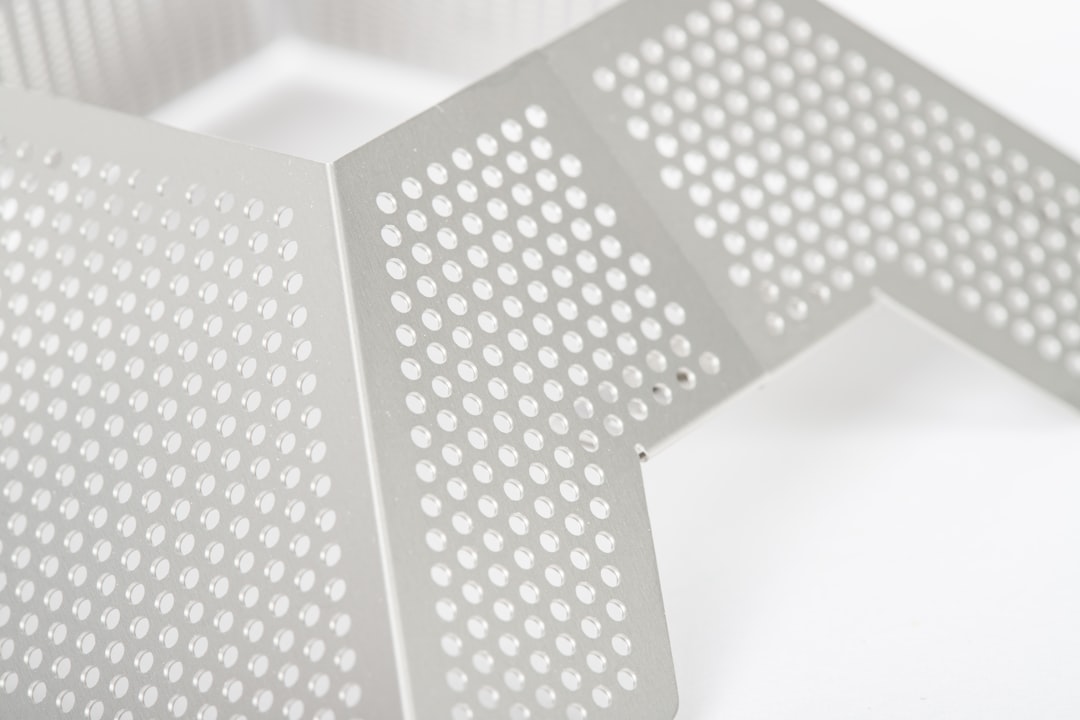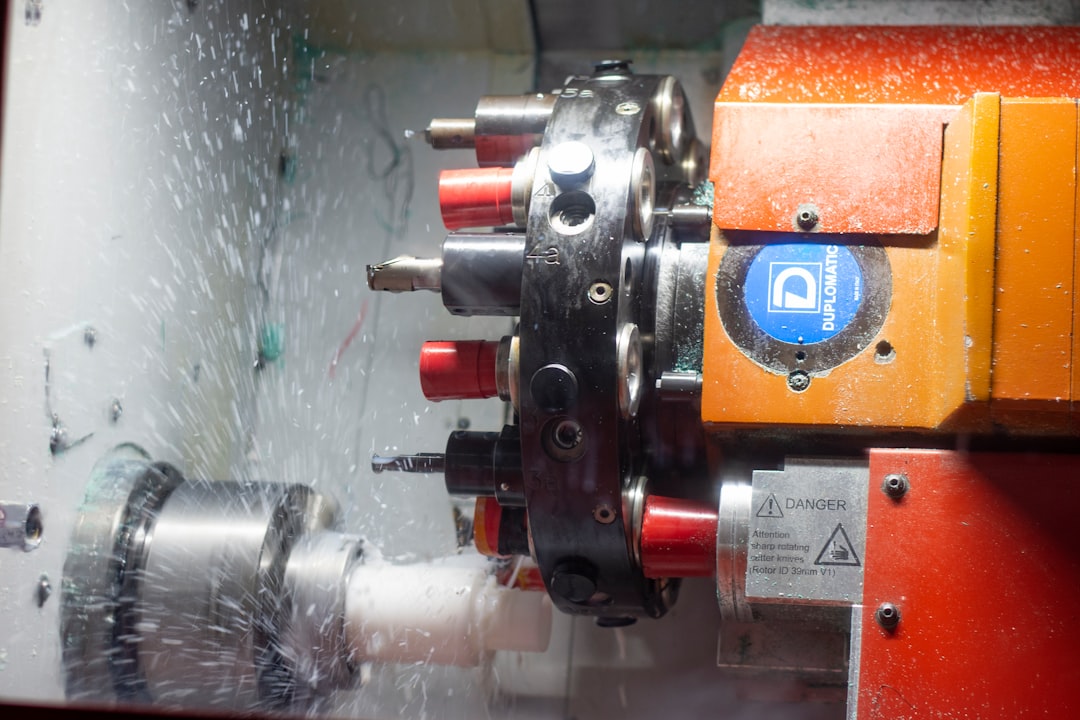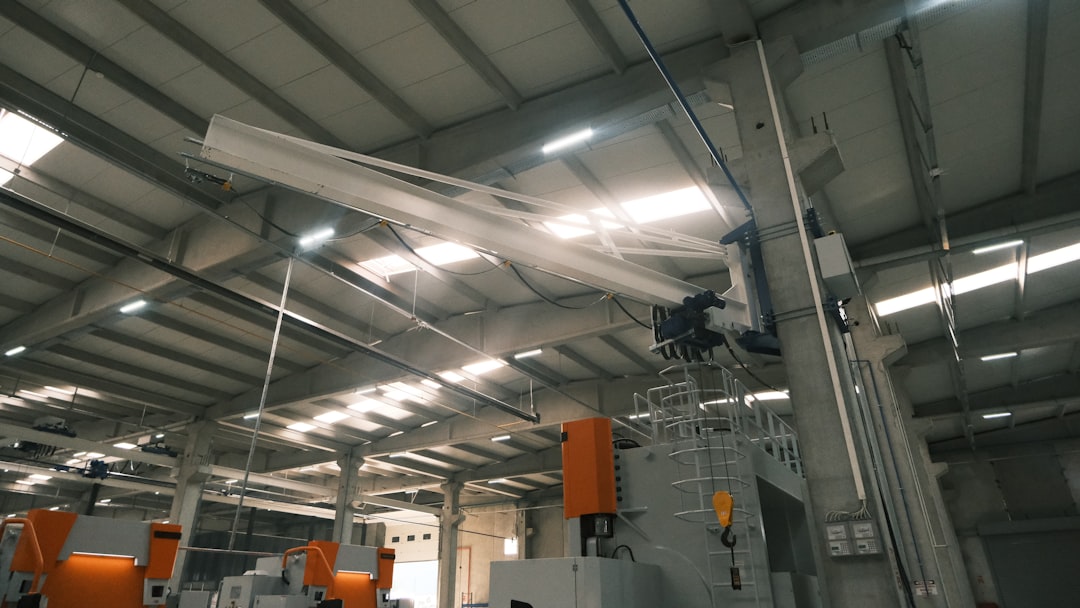QR codes have evolved from a novelty to a strategic powerhouse in bridging offline engagement with online action. In fiberglass fabrication services, where work spans engineering, production, installation, and long-tail maintenance, QR codes create instant access to what matters most: specs, certifications, service requests, and quote forms. They remove friction at the moment of interest and capture intent that would otherwise vanish into the noise of busy shop floors and jobsites. For broader context on strategy, explore QR codes in marketing.
This channel is particularly valuable in a sector where high-value opportunities often slip through the cracks due to manual workflows and fragmented systems. When QR scans map directly to CRM records and service queues, teams convert curiosity into conversations and paper trails into measurable pipelines. The result is faster follow-up, better attribution, and a connected customer journey from the first sample to the final install and beyond.
By integrating QR technology throughout operations, fiberglass providers can replace outdated processes like sign-in sheets or static manuals with real-time analytics, instant audience segmentation, and proactive engagement. Every scan becomes a signal that improves prioritization and accountability. With modern platforms that unify creation, tracking, and CRM sync, companies can attribute revenue to specific touchpoints and allocate resources where they produce the greatest impact.
How to Enable Instant Access in Fiberglass Fabrication Services Using QR Codes: A Step-by-Step Guide

QR codes convert physical touchpoints into high-value, trackable interactions across the fiberglass lifecycle. Consider how often intent stays invisible: a prospect flips through a spec sheet at a trade show, a contractor needs an installation guide on a windy jobsite, or an owner operator wants to reorder a custom part. Without a clear digital pathway, there is no follow-up, no data, and no deal. QR codes change that equation by making the next step effortless.
The best outcomes come from planning QR experiences around real-world moments of need. Replace forms that require manual transcription, eliminate guesswork about which assets drive action, and ensure that your teams can see and respond to interest in minutes rather than days. Done well, QR deployment shortens sales cycles, reduces service delays, and injects measurable data into areas of your business that used to be opaque. Browse Sona QR’s use case library for inspiration.
- Deploy QR experiences across the full project lifecycle: Add codes to design packets, prototypes, finished parts, service tags, and warranty cards. Scans route to content or actions aligned with each stage: specs during engineering, quote forms during evaluation, install guides during deployment, and support portals post-install.
- Replace analog friction with digital convenience: Retire clipboards, manual sign-in sheets, and generic brochures. QR codes launch curated forms, calculators, galleries, or AR previews. This improves data quality and accelerates response.
- Optimize placement and calls to action: Put codes where professionals naturally pause. Use bold CTAs like Scan for MSDS or Scan to Request a Custom Layup. Ensure placement survives dust, solvents, and outdoor conditions with UV-stable labels and protective lamination.
- Capture the who, where, and why of each scan: With a platform like Sona QR, attribute scans by asset, location, and campaign. Tie scans to contacts in your CRM so your team can prioritize by intent, not guesswork.
When combined with dynamic routing and CRM automation, QR programs create operational flexibility. Marketing can update offers without reprinting. Sales can see which datasheets produce real pipeline. Field teams can log service in seconds. Management can allocate budget to the placements that convert. Tools like Sona QR streamline code generation, governance, and analytics so your organization gets the benefit without adding overhead.
Why Do QR Codes Matter for Fiberglass Fabrication Services?

Fiberglass fabrication work happens in the real world: on shop floors, in truck beds, inside engine rooms, and on rooftop mechanical pads. Information does not always travel with the people who need it. QR codes help fix that by creating reliable connections between physical parts and digital actions.
- Offline to online gaps: Customers handle samples, scan labels, and study prototypes, but interest often ends there when the path to action is unclear. QR codes on brochures, prototypes, and signage let people request quotes, specs, or demos at the exact moment curiosity peaks. This transforms passive browsing into measurable intent.
- Need for speed and simplicity: No one wants to download an app to access an MSDS sheet or a torque spec. With one scan, a QR code can open an install guide, launch a service request, or prefill a contact form. This immediacy is critical on busy jobsites and in high-stakes production windows.
- Limited visibility into active interest: Unlabeled paper packets and generic handouts shed no light on what resonates. QR-enabled datasheets log each scan and map to assets or topics. Sales can see which use cases attract attention and follow up with relevant case studies or pricing.
- Dynamic content flexibility: Pricing, certifications, and guides evolve. A dynamic QR allows you to update destinations without reprinting labels or marketing collateral. This is essential for regulated materials and fast-changing product lines. See how retailers deploy dynamic QR codes.
- Trackability and attribution: Traditional print cannot show performance. QR codes log scans, geolocation, device type, and timing. With Sona QR dashboards, teams can segment by trade show, jobsite, or distribution partner and attribute pipeline and revenue to specific placements.
- Cost efficiency: Codes are fast to create and easy to scale across molds, cartons, labels, machinery, and invoices. A single dynamic code can serve multiple audiences with conditional routing, making every print run go further.
For fiberglass providers, these advantages translate into better customer experiences and stronger commercial results. Add QR to appointment cards, work orders, field tags, safety signage, and installation packets. Each scan reduces friction at a critical moment while giving your team measurable data to drive continuous improvement.
Common QR Code Formats for Fiberglass Fabrication Service Use Cases

One format does not fit every situation. The right QR type depends on the context, the audience, and the action you want to trigger. Start with the scenarios you encounter most, then select formats that minimize friction and maximize signal.
- Web link QR codes: Route to product pages, spec libraries, case studies, or AR visualizations. For example, a sample board can link to a composite layup selector or resin compatibility chart. Use UTM parameters for source-level attribution.
- vCard QR codes: Equip booth staff and field reps with scannable contact details so prospects can quickly save the right engineer or account executive. This shortens time to follow-up and reduces data entry errors. For setup tips, see how to share contact info.
- Form-enabled QR codes: Launch quote requests, service tickets, sample orders, or site assessments. Prefill fields based on asset or location to reduce typing. This is ideal for jobsite labels and on-equipment tags.
- File download QR codes: Provide MSDS sheets, installation drawings, and maintenance checklists as on-demand PDFs. Dynamic links let you keep documents current without reprinting labels.
- Dynamic destination QR codes: Manage content changes over time. Update a single QR on a product label to route to revised instructions, new certifications, or seasonal promotions. Segment by scan context to personalize journeys. Learn more in Sona QR’s product overview.
For fiberglass fabrication, the most valuable mix typically includes form-enabled and dynamic destination codes on equipment, packaging, and technical collateral. With Sona QR, teams can generate and govern all of these formats in one place, add identity resolution where applicable, and sync scan data to CRMs and MAPs for actionable reporting.
Where to Find Growth Opportunities in Fiberglass Fabrication Services

Growth lives at physical touchpoints that already exist. The question is not whether people will see your materials, but whether your materials can move people to act and reveal who they are. QR codes give every asset a job. Start with high-traffic surfaces and moments where intent is strong and time is short.
- Trade shows and expos: Add codes to booth backdrops, machinery demos, handouts, and sample displays. Differentiate CTAs by audience segment: architects can scan for load tables, marine builders for gelcoat performance data, and fleet managers for maintenance programs. Each scan becomes a tagged lead with clear context. Consider QR on badges to capture interactions in motion.
- On-site project installations: Label custom parts with durable, UV-stable QR tags. Enable instant access to installation guides, torque specs, and warranty submission. Capture service requests with photos and GPS location to reduce back-and-forth and protect your install margins. Durable labels are ideal for harsh environments.
- Product packaging and labels: Connect customers to reordering, care instructions, or compatibility checks from the moment they unbox. Track post-sale engagement to time cross-sell offers like premium coatings or extended service plans. See examples in product packaging.
- Workshop and safety signage: Replace static notices with QR links to up-to-date SDS sheets, equipment lockout procedures, or hazard reporting forms. Audit scan logs to identify training needs and prove compliance. Use QR in digital signage to keep information current.
- Direct mail and print ads: Use campaign-specific codes to turn brochures and postcards into measurable funnels. Segment scans by region, vertical, or distributor to focus sales resources where interest is real. Explore direct mail tactics that attribute pipeline.
By treating each surface as a conversion opportunity, you raise the ceiling on acquisition and retention. The revenue impact compounds as you identify which placements convert, scale the best performers, and sunset anything that does not pull its weight.
Use Cases for QR Codes in Fiberglass Fabrication Services

The most effective QR programs align directly with day-to-day tasks and buyer journeys. Below are three high-impact use cases that map to common interactions across fiberglass providers.
- Maintenance portal access: Place QR codes on fabrication machinery, vacuum pumps, and curing ovens to open troubleshooting guides, maintenance logs, and service request forms. Add conditional routing for after-hours triage. The outcome is faster issue resolution, reduced downtime, and a steady stream of high-intent signals into your CRM and service platform. Consider integrating QR-powered tickets for traceable service.
- Digital quote requests: Feature QR codes on catalogs, datasheets, and booth signage that launch dynamic quote forms. Prefill product references or geometry from the asset that was scanned. The outcome is more qualified leads, faster estimates, and shorter cycles, since contact details and requirements are captured at the moment of interest. See how QR elevates catalogs.
- Regulatory and safety data access: Embed QR codes on resin drums, reinforcement rolls, and finished goods to link to MSDS, ASTM standards, and certifications. Provide multilingual support and update links centrally when requirements change. The outcome is simplified audits, improved compliance, and visibility into which customers consult safety data, indicating where training, service, or product upgrades may be timely.
In each case, the QR experience replaces guesswork with guided action. Instead of hoping a prospect emails later or that a field tech finds the right binder, the scan delivers exactly what is needed. The system records who scanned, when they scanned, and what they did next, which gives teams the context required to serve better and sell smarter.
How to Build High-Value Audiences for Retargeting with QR Code Campaigns
Every scan is a micro-conversion with embedded context. When you deploy codes across brochures, parts, packaging, and signage, you are not only improving experience, you are building segmented audiences grounded in behavior rather than assumptions. This is the foundation for effective retargeting and lifecycle marketing.
- Create unique QR codes for each journey stage: Awareness codes on event signage route to educational content; consideration codes on product literature route to spec tools; conversion codes on pricing sheets route to quote or procurement forms. Each segment maps to a clear nurture path.
- Tag audiences based on use case: Use code groups to differentiate spec hunters, maintenance requesters, and reorder customers. For fiberglass, consider distinctions like marine builders vs. industrial OEMs, architects vs. contractors, and distributors vs. end users. These tags power personalized follow-up.
- Track location, channel, and timing: Store context like booth number, distributor branch, or jobsite GPS to prioritize outreach when urgency is high. A maintenance scan at 6 a.m. on a Monday merits an immediate response. A spec library scan on a Sunday evening suggests research mode and an educational sequence.
- Feed segments into your CRM and ad platforms: With Sona QR, scan data flows to HubSpot, Salesforce, and ad ecosystems like Google and Meta. Trigger email sequences, SMS updates, or custom audiences that mirror the scanner’s intent and stage. For paid media execution, try intent-driven retargeting.
When you retarget by role and scenario, messaging becomes more relevant. A marine fabricator who scanned a gelcoat durability guide should not receive the same sequence as a building envelope engineer who scanned R-values and fire ratings. Use behavior to simplify what you say and when you say it.
Integrating QR Codes into Your Multi-Channel Marketing Mix
QR codes act as the connective tissue across print, in-person events, field service, and digital follow-up. They make each channel smarter by turning anonymous interest into attributed engagement and next-step action.
- Brochures and technical collateral: Add QR codes to spec sheets, installation guides, and case studies. Route to calculators, CAD downloads, or long-form demos. Each scan shows which topics and verticals are resonating so marketing can optimize content and sales can tailor outreach.
- Social media and UGC campaigns: Use QR codes on sample kits, packaging inserts, or event signage to invite customers to share installations or submit before-and-after photos. Reward participation with discounts or early access. Tag these scanners as advocates for future referral programs. See ways to drive engagement on social networks.
- Direct mail and distributor programs: Equip channel partners with co-branded mailers and shelf talkers that link to customized landing pages. Track which branches and territories drive scans, then allocate MDF based on performance rather than guesswork.
- Digital signage and video content: Place QR codes in training videos, facility lobbies, and warehouse screens. Viewers can scan to download detailed manuals, enroll in training, or book consultations. This reduces friction and creates measurable engagement from content that used to be passive. For a quick primer, watch this video tutorial.
- Conferences, trade shows, and plant tours: Add QR codes to badges, booth walls, demos, and swag. Use dynamic routing to switch from pre-show teasers to live schedules to post-show surveys. Each scan is logged with event metadata so you can attribute meetings and pipeline to specific assets.
When all scans flow to a centralized platform like Sona QR, you can maintain link governance, monitor performance in real time, and push data into your CRM and MAP without manual effort. QR codes become not just links, but levers that coordinate how all your channels perform together.
Step-by-Step QR Campaign Execution Checklist
Getting started does not require a massive overhaul. Focus on a few high-impact use cases, prove lift, then scale. The steps below will help you launch with clarity and avoid common pitfalls.
Step 1: Choose Your Use Case
Start with moments where missed engagement hurts most. In fiberglass, that often includes quote requests from datasheets, service submissions from installed components, and MSDS lookups from packaging. Pick one use case for acquisition and one for customer experience so you can show impact on both pipeline and retention.
- Define your business outcome: Clarify what success looks like, such as a 30 percent lift in quote requests from a specific brochure or a 50 percent reduction in time-to-first-response for field service scans. Alignment on outcomes keeps decisions focused and measurable.
- Map the user journey: Identify where the code will live, what page it will open, and what happens next. Decide whether the experience supports anonymous education, lead capture, or immediate service. Streamline everything to minimize steps.
Step 2: Pick a QR Code Type
Different use cases call for different formats. Static codes work for content that does not change; dynamic codes unlock measurement and flexibility.
- Choose static for fixed assets: Installation PDFs or evergreen safety guidance can use static codes. This keeps creation simple for documents that rarely change.
- Use dynamic for campaigns and governance: Pricing, promotions, and any asset that needs tracking should use dynamic codes via Sona QR. You can edit destinations later, add UTM tags, set rules based on device or language, and see scan analytics without reprinting.
Step 3: Design and Test the Code
Design influences whether people scan and whether the code survives the working environment. In fiberglass applications, durability and clarity matter as much as aesthetics.
- Brand and frame your code: Add your logo, use high-contrast frames, and place a clear CTA like Scan for Custom Specs. Ensure the CTA answers the question why should I scan.
- Test in real conditions: Check scannability from different angles and distances, under sun glare, with dusty surfaces, and through protective film. Verify that the destination loads quickly on limited jobsite connectivity. Keep destination pages light and mobile friendly.
Step 4: Deploy Across High-Impact Channels
Roll out codes where lead or issue capture has historically lagged. Start with materials that already reach your best-fit customers.
- Prioritize high-intent placements: Trade show displays, product labels, technical documentation, invoices, and work orders often yield the highest return. For installed parts, use industrial-grade labels that resist UV, solvents, and abrasion.
- Coordinate with teams and partners: Train booth staff, installers, and distributors on how to position and promote scanning. Provide scripts and signage that set expectations about what happens after the scan.
Step 5: Track and Optimize
Measurement turns QR from a convenience into a performance lever. Plan reporting before launch so you can adjust while campaigns run.
- Monitor beyond raw scans: Track conversion events like form completions, callback requests, file downloads, and time on page. Use A/B tests for CTAs, placements, and landing pages to improve results.
- Close the loop with CRM: Push scan activity to contacts and accounts in Salesforce or HubSpot so sales and service see context alongside every conversation. With Sona QR and Sona, you can attribute pipeline and revenue to specific codes and placements, not just channels. For CRM setup, see Sona’s blog on HubSpot integration.
Tracking and Analytics: From Scan to Revenue
Without attribution, offline engagement is invisible. QR codes expose what used to be guesswork by capturing the who, where, and when of every interaction, then tying it to outcomes that matter. For fiberglass teams, this means you can compare a trade show banner against a distributor end cap, or a work order insert against a packaging label, and invest accordingly.
- Track every scan with context: Record time, device, location, referring campaign, and asset ID. This turns a scan into a structured event that can power dashboards and alerts. Sona QR consolidates these signals without extra code or manual effort.
- Measure engagement and progression: Determine whether scanners complete quotes, request callbacks, download files, or exit. Understanding drop-off points guides page design and follow-up strategy.
- Sync with your CRM for visibility: Attach scan events to leads, contacts, and accounts. Sales sees which assets triggered interest. Service sees when a customer requested help and what they viewed before submitting a ticket. This reduces duplicate effort and accelerates response.
- Attribute revenue to placements: With account identification and single vs. multi-touch attribution models, connect anonymous scans to known buyers and understand how each touch contributes to pipeline.
- Unify buyer journeys across touchpoints: Link QR scans with ad clicks, email opens, website activity, and CRM status changes. This full-funnel view reveals which content and surfaces move buyers from awareness to purchase readiness.
The result is a marketing and operations engine that learns. You invest in the placements that produce pipeline, refine the ones that underperform, and retire what does not convert. Over time, your cost per qualified lead and cost per resolved ticket both improve.
Tips to Expand QR Success in Fiberglass Fabrication Services
QR deployments get stronger with governance and iteration. A handful of best practices will raise scan rates, improve data quality, and increase ROI from day one.
- Use unique QR codes for each print or packaging asset: Differentiate by placement such as datasheet, carton label, work order, or invoice insert. This granularity reveals which surfaces produce the best leads, downloads, or service requests so you can scale the winners.
- Append UTM parameters to every destination: Add source, medium, campaign, and content parameters to isolate performance by channel and asset. This removes ambiguity in reporting and aligns marketing and sales on what is driving results.
- Trigger automated follow-up after each scan: Connect scans to email sequences, SMS alerts, or sales tasks. When someone scans a quote QR, an AE is notified and a personalized email goes out within minutes. Speed-to-lead is often the difference between winning and losing. For additional ideas, see this guide to QR code marketing.
- Educate teams and customers on the value of scanning: A QR code converts only if people know what they will get. Train installers to point out labels and explain benefits. Add clear CTAs that emphasize outcomes like Download CAD Files or Get 24 Hour Service.
Concrete examples: Add QR codes to service tags so maintenance staff can log activity with photos and timestamps, surfacing upsell opportunities for parts and service contracts earlier in the cycle. Place QR codes on invoices to route satisfied customers to claim registration, warranty extensions, or referral programs that increase lifetime value.
Final Thoughts
For fiberglass fabrication services, QR codes are not a novelty. They are an enabling technology that connects hands-on work with the digital systems that power revenue, service, and compliance. By embedding QR codes into catalogs, labels, equipment, and installations, providers remove friction for users while revealing the intent signals that teams need to act quickly and intelligently.
The payoff is practical and measurable. Faster quotes, fewer service delays, cleaner audits, and marketing that proves its impact. With platforms like Sona QR and Sona, you can generate codes, manage destinations, capture scan analytics, sync with your CRM, and attribute revenue to placements with confidence. Start small with high-intent surfaces, learn from the data, and scale what works. Start creating QR codes for free.
Conclusion
QR codes have transformed fiberglass fabrication services from traditional, manual workflows into streamlined, efficient operations with measurable results. Whether it’s enhancing project tracking, improving client communication, or simplifying access to technical specifications, QR codes replace cumbersome paper processes with instant, mobile-friendly solutions that capture real-time data and boost operational accuracy.
Imagine instantly accessing detailed fabrication data on-site, reducing errors, and accelerating approvals—all while providing clients with seamless updates at their fingertips. With Sona QR, you can create dynamic, trackable QR codes in seconds, update information without reprinting labels, and link every scan directly to project milestones and revenue outcomes. No lost details, no delays—just smarter, more productive fabrication management.
Start for free with Sona QR today and turn every scan into a step toward flawless fiberglass fabrication and stronger client relationships.
FAQ
What are the different applications of fiberglass fabrication services using QR codes?
QR codes in fiberglass fabrication services are used across engineering, production, installation, and maintenance to provide instant access to specs, certifications, service requests, quote forms, and to improve communication and tracking throughout the project lifecycle.
How do I choose a reliable fiberglass fabrication service provider integrating QR code technology?
Choose providers that use dynamic QR codes to connect physical assets with digital content, enable CRM integration for tracking and attribution, offer durable QR code placements for harsh environments, and provide platforms like Sona QR for code generation and analytics.
What are the benefits of using fiberglass fabrication with QR code integration for my project?
Benefits include faster follow-up on leads, reduced service delays, improved data quality, measurable pipeline attribution, simplified compliance, real-time analytics, and enhanced customer engagement from initial specs to post-install support.
What types of materials and finishes are available for QR code labels in fiberglass fabrication services?
Durable materials such as UV-stable labels with protective lamination are used to ensure QR codes survive dust, solvents, outdoor conditions, and harsh environments typical in fiberglass fabrication.
How does the cost of implementing QR codes in fiberglass fabrication compare to other materials or methods?
QR codes are cost-efficient to create and scale, replacing manual and analog processes, reducing overhead, and allowing multiple audiences to be served with a single dynamic code, which lowers overall cost compared to traditional print or static materials.





















